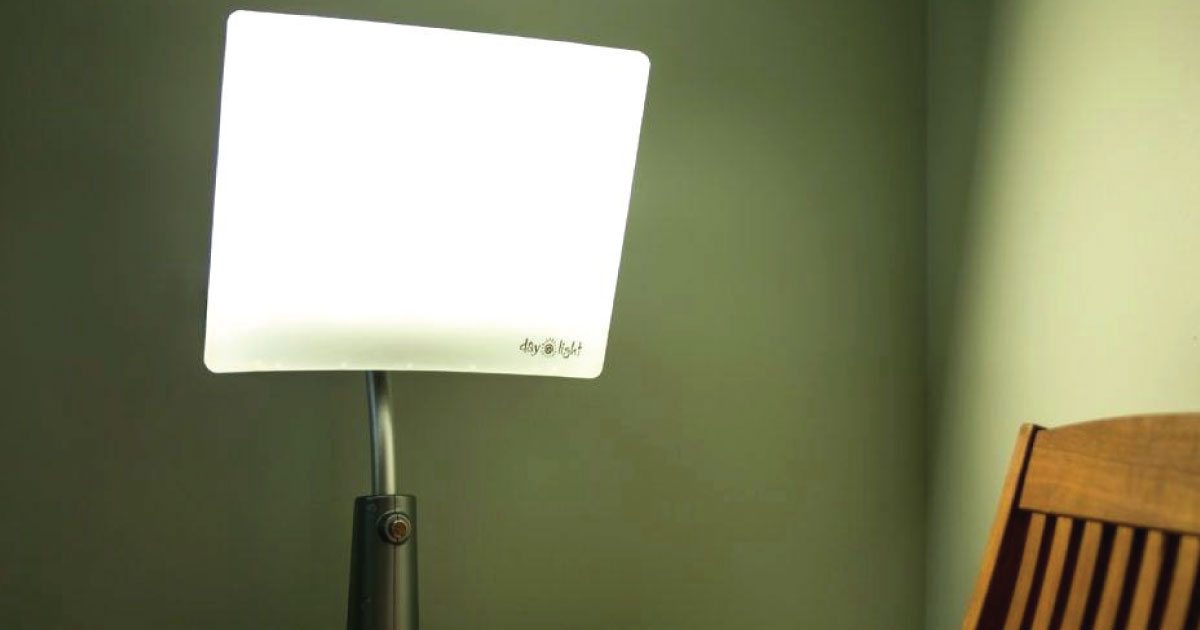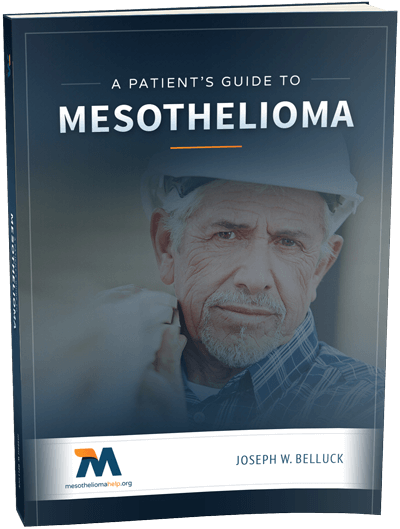Mesothelioma Help Cancer News

Light Therapy May Ease Fatigue, Depression in Mesothelioma Patients
When being treated for mesothelioma, patients are often faced with a myriad of side effects that come along with the benefits of the cancer-fighting medicines. Fatigue, insomnia, and depression are some of the effects that often linger even after treatments are complete. Now, researchers report that light therapy may help to ease these side effects for some cancer survivors.
In a clinical trial being conducted by researchers at Icahn School of Medicine at Mount Sinai, the researchers are trying to determine whether regular exposure to “bright white light” can help reduce fatigue and depression in cancer patients, according to an April 11 Wall Street Journal article.
“We know that cancer patients are light-deprived,” says William Redd, a Mount Sinai psychologist and professor of medicine and a lead researcher in the trial. “You feel lousy, you stay at home, you feel even worse.” However, light therapy, he says, “has had a major impact on cancer patients with fatigue and depression.”
The National Cancer Institute estimates that 33% of all cancer survivors deal with significant emotional distress, including depression. Patients treated for mesothelioma, a terminal asbestos-caused cancer, are faced with limited treatment options and use of highly toxic doses of drugs that leave them both physically and emotionally drained. Helping to ease this stress and feelings of overwhelm can bring patients a better quality of life.
While light therapy, often called systematic light exposure, has been used for another form of depression, SAD or seasonal affective disorder, brought on by the absence of sunlight, this study is the first to assess the effects on cancer patients.
In the clinical trial, those patients who were exposed to the white light “had significant improvements in relieving symptoms of depression” compared to the group who were exposed to a dim red light. Those in the red-light group, in fact, saw no difference in their condition.
Although the researchers are still trying to uncover the reason of why the white light is effective, they believe it affects the patients’ circadian rhythms, known to influence sleep patterns and mood. According to the researchers, cancer patients often have disrupted circadian rhythms.
Like every treatment, not everyone will benefit, particularly patients with severe depression, and patients may still need some traditional medication. However, Sonia Ancoli-Israel, a professor emeritus at the University of California, San Diego who is working with the Mount Sinai team, says that the light therapy does offer “the potential to improve quality of life in cancer patients.”
Next, Mt. Sinai and Memorial Sloan Kettering Cancer Center will combine resources in a five-year study of light therapy that will focus on fatigue, depression, sleep problems, and circadian rhythms in cancer patients. Funded by a $3.4 million grant from the National Cancer Institute, the researchers hope to recruit 200 cancer patients.
“There is medication, there is cognitive behavior therapy, but this is so simple,” says Katherine DuHamel, the Sloan Kettering psychologist involved in the study.
Mesothelioma is a serious cancer that occurs in individuals exposed to airborne asbestos fibers. The disease is highly aggressive and is resistant to many standard cancer treatments making it a difficult disease to treat effectively. While many factors determine survival for a patient, such as treatment plan, age, overall health and fitness of the patient and the extent of the disease, physicians also believe that a positive outlook can result in the improvement in a mesothelioma patient’s health.
Photo Credit: Kalfatermann

Birthday Wishes to My Dad
April 25 would have been my Dad’s 60th birthday. As I sit and ponder, I imagine what this day would have been like if mesothelioma hadn’t robbed us of him. It’s kind of difficult to think about, but my mind wanders there nonetheless.
When Dad turned 50, we had a huge surprise party for him. It was a night filled with music (provided by his band, of course), family, friends, and fellowship. I will never forget the beaming smile that he carried throughout the gathering; it was even more glowing than usual. Dad was so happy to be surrounded by those he loved, and touched that they took the time to be with him.
My father deserved to be celebrated every day, even though he never would have agreed with my sentiments. He was a humble man who felt that he was just doing what he was supposed to do. This meant helping others, seeing the best in every situation, and most of all, being true to his faith. There was not a fake bone in Dad’s body; with him, what you saw was truly what you got.
It is honestly heartbreaking to think that my Dad won’t be here to celebrate such a milestone with us here. I do, however, take comfort in knowing that whatever he’s doing up in Heaven pales in comparison with anything we could plan on earth. Happy birthday, Dad. We love and miss you, and we know that you’re having a beautiful celebration that will last for eternity.
Know more about Mesothelioma and how you can deal with it.
ADAO’s Mission Impresses Mesothelioma Nurse
The Asbestos Disease Awareness Organization was co-founded by Linda Reinstein and Doug Larkin. This organization was founded by the courageous duo who watched their loved ones pass away from the terrible illness caused by asbestos: mesothelioma. Linda’s husband was diagnosed in 2003. He endured chemotherapy and had to undergo multiple surgeries where his left lung, pericardium and diaphragm were removed, and his diaphragm was replaced with goretex. Sadly, he passed away in 2006 leaving behind his wife and daughter. Doug Larkin also lost a family member to this dreaded disease, and now he works tirelessly to serve his memory.
Together, the two have taken their grief and turned it into a positive example of helping the mesothelioma community and in fighting the world of asbestos. They are more than just a couple of individuals trying to prevent the spread of asbestos: they know what it feels like to lose a loved one to this disease and they have seen it happen to too many other families. Linda and Doug have a mission to ban asbestos globally. The ADAO started small, but today it is a 501c nonprofit, and is the largest U.S.- based independent asbestos victims organization.
The vision of ADAO is to eliminate asbestos-related diseases, like mesothelioma. ADAO works with public health organizations, healthcare workers, and many others to help ban asbestos. ADAO has three initiatives: education, advocacy and community.
You can find Linda at most mesothelioma conferences reaching out to help others who have been affected by the terminal cancer and other asbestos-related diseases. This month, she led the 12th Annual International Asbestos Awareness and Prevention Conference in Washington DC.
Since 2005, the annual conference has brought over 300 speakers ranging from victims, lawmakers, and experts to share their information. Gathering so many experts can only bring more education, awareness and long-lasting relationships.
Thank you for all who continue to work hard at fighting this dreaded disease and at educating the world about the harm asbestos is causing in our communities.
By increasing awareness of asbestos, the hope is that other people’s loved ones will not suffer as theirs did. For more information about the good work from this organization, visit the Asbestos Disease Awareness Organization website.

Worker’s Memorial Day Is a Sad Reminder About the Dangers of Asbestos
April 28 is recognized as Worker’s Memorial Day. It is a day to remember those who have died or who have become ill because of their job, and is a time to look toward the future in building and requiring safer working environments for all.
You always hear on the news about tragic accidents that take employees’ lives far too soon. Unfortunately, as the mesothelioma community knows all too well, the workplace is not always the most harmless place to be. Many people who have been victims of mesothelioma were exposed to asbestos in the workplace. My Dad, Don Smitley, passed away at the age of 57 from mesothelioma. This disease is a direct consequence of exposure to asbestos.
Maybe this day is a good time to renew our commitment as well. By recommitting ourselves to the cause of removing all traces of asbestos from our lives, be it at work, at home, or at play, we can make a difference. The mesothelioma community has a goal to make this toxic substance illegal. Taking this on can be a key step in helping to eradicate mesothelioma.
My thoughts and prayers go out to all those who have lost a loved one in or because of an unsafe work space. Banding together, we can be the catalyst to make a change for the better.

Constipation Should Be Addressed Quickly Says Mesothelioma Nurse
Understanding what to expect from mesothelioma treatment can be confusing and difficult to understand. Patients and family members seek out the latest cutting-edge research and clinical trials in which to participate with the goal to increase quality time with their loved ones. But, regardless of the selected treatment, care comes with its own set of issues. Some of the common issues that mesothelioma patients face are pain, shortness of breath, fluid status issues, and depression.
One of the problems that occurs all too frequently for mesothelioma patients, but no one wants to talk about, is constipation. Constipation is emotionally upsetting and embarrassing to discuss. But, this common problem that can be daunting to patients and families dealing with mesothelioma treatment is vital to recognize and immediately address.
According to the National Institutes of Health and the National Digestive Diseases Information Clearinghouse, the definition of constipation is a “condition in which a person has fewer than three bowel movements a week or has bowel movements with stools that are hard, dry, and small, making them painful or difficult to pass.” Everyone is different, and for some people, not going once a day may make them think they are constipated.
This condition is very common with 15% of the U.S. population being affected, and is very common post-surgery. The most common causes for constipation are a diet low in fiber; a lack of exercise; medications, especially pain medications; and changes in daily routine. Post-surgery pleural mesothelioma patients, or any post-surgery patients, can have all of these factors.
Treatment for constipation can include a change in diet and exercise habits, or change of medication. When taking pain medication, it is very important to be aware of the possibility of constipation. Laxatives are usually ordered by your physician and should be taken along with the pain medications. Common laxatives are available by mouth and come in many different forms, including pills, liquid, and powder.
Constipation might seem like a minor problem, but left unrecognized and untreated, serious complications can arise. As an example, a patient I called recently was constipated with a distended abdomen and he felt miserable. He had to be readmitted to the hospital for care. He and his family had been so focused on pain and fluid restriction that constipation snuck up on them.
Mesothelioma patients and families need to realize how this common problem is one that they should be aware of and discuss with their mesothelioma team. When dealing with a complicated disease like mesothelioma it is important to remember the basics and the role they play in a successful recovery.
If you have questions about your mesothelioma treatment or any aspect of your mesothelioma care, please email me at [email protected].
Free Mesothelioma Patient & Treatment Guide
We’d like to offer you our in-depth guide, “A Patient’s Guide to Mesothelioma,” absolutely free of charge.
It contains a wealth of information and resources to help you better understand the condition, choose (and afford) appropriate treatment, and exercise your legal right to compensation.
Download Now